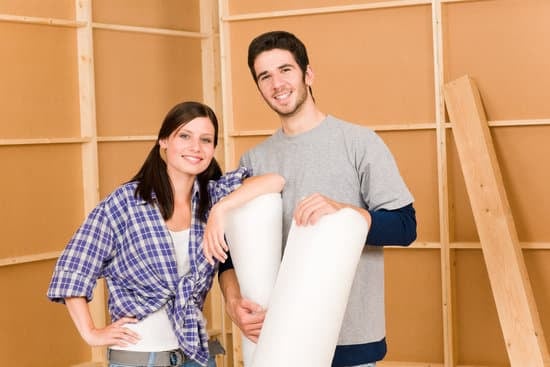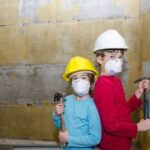Since the early 2000s, there has been a growing interest and concern among homeowners and industry professionals regarding the quality of home construction. Many individuals question whether the standards and practices in place at that time were sufficient in ensuring durable and safe homes. With advancements in technology, changes in regulations, and an increased focus on sustainability, it begs the question: has home construction quality improved since the early 2000s?
This article aims to thoroughly explore this topic, examining various factors that have contributed to changes in home construction quality over the years. From a historical perspective, we will begin by providing an overview of home construction standards and practices in the early 2000s. This context will help establish a baseline from which we can assess any improvements or shifts that have occurred.
Next, we will delve into technological advancements in home construction and how innovation has impacted the overall quality of homes. From new building materials to advanced techniques and processes, these innovations have provided opportunities for enhanced durability, energy efficiency, and overall homeowner satisfaction.
Regulatory changes also play a pivotal role in improving construction quality. Building codes and standards have evolved over time to address safety concerns and raise industry-wide expectations for builders. We will examine how these changes have affected home construction quality since the early 2000s.
In subsequent sections, we will explore other key aspects that contribute to improved home construction quality, including materials and techniques used today compared to those used in the past. Additionally, we will highlight the importance of rigorous quality control and inspection procedures as well as showcase notable case studies exemplifying improved construction practices.
To provide a comprehensive analysis, homeowner satisfaction and perception will be analyzed through surveys and studies conducted on this subject. By studying homeowners’ experiences with newer constructions compared to older ones, we can gain insights into their level of satisfaction with regard to quality.
Finally, we will investigate future trends and predictions on the continual improvement of home construction quality. As technology advances, regulations evolve, and environmental concerns grow, it is crucial to explore how these factors will shape the industry and push for further enhancements.
Overall, this article aims to provide a comprehensive exploration into whether home construction quality has improved since the early 2000s. By examining historical context, technological advancements, regulatory changes, materials and techniques, quality control procedures, case studies, homeowner satisfaction and perception, as well as future trends, we hope to shed light on this critical topic and offer a well-rounded perspective on the improvements that have been made in home construction over the last two decades.
Historical Context
During the early 2000s, home construction standards and practices were influenced by a variety of factors. From building codes and regulations to construction techniques and materials, the industry was continually evolving to meet the demands of homeowners and ensure their safety. This section provides an overview of the historical context of home construction in the early 2000s, shedding light on the prevailing standards and practices at that time.
Building Codes and Regulations
One of the key aspects that shaped home construction standards in the early 2000s was the implementation of building codes and regulations. These codes served as guidelines for builders and contractors to ensure that homes were constructed following specific safety requirements. Building codes covered various aspects, including structural integrity, fire safety, electrical systems, plumbing, ventilation, and more.
During this period, building codes were evolving to address emerging issues and improve construction quality. For example,, there was a growing focus on energy efficiency in response to concerns about climate change. As a result, many states started to adopt stricter energy codes that stipulated insulation requirements, window efficiency ratings, and HVAC system standards.
Construction Techniques
The early 2000s also witnessed significant advancements in construction techniques. Traditional methods like stick framing continued to be widely used for residential construction but were gradually supplemented or replaced by newer methods such as panelized or modular construction. Panelized or modular construction involved manufacturing entire sections of a house off-site then shipping them to the building site for assembly – enabling faster construction while maintaining quality control.
Additionally, there was also increased adoption of computer-aided design (CAD) software during this period. This technology enabled builders and architects to create detailed digital models before beginning actual construction work – allowing for improved accuracy in measurements, better planning of resources, identification of potential issues beforehand ,and ultimately contributing towards better overall quality.
Materials
In terms of materials, the early 2000s saw a shift towards more sustainable and durable options. Builders began to prioritize environmentally friendly choices, such as using engineered lumber made from fast-growing trees or recycled materials. These alternatives not only reduced deforestation but also offered increased structural stability compared to traditional solid timber.
Moreover, innovative products like fiber cement siding gained popularity due to their resistance to rot, insects, and fire – enhancing the longevity of homes. The use of low-emissivity (low-e) windows with multiple panes and special coatings became more widespread, contributing to improved energy efficiency.
Overall, the historical context of home construction in the early 2000s laid the foundation for subsequent improvements in quality. As building codes and regulations evolved, construction techniques advanced, and sustainable materials became more accessible – the industry was on a trajectory towards raising the bar for home construction quality.
Technological Advancements in Home Construction
Introduction
In recent years, technological advancements have revolutionized the home construction industry, resulting in significant improvements in the quality of homes. From design and planning to construction and maintenance, innovation has played a crucial role in enhancing various aspects of home construction. This section will explore some key technological advancements that have had a profound impact on the quality of homes since the early 2000s.
BIM (Building Information Modeling)
One of the most notable technological advancements that has transformed home construction is Building Information Modeling (BIM). BIM allows for a comprehensive digital representation of a building’s physical and functional characteristics. It enables architects, engineers, and contractors to collaborate more efficiently throughout the entire construction process.
With the help of BIM, designers can create accurate, three-dimensional models that facilitate better visualization of the final product. This reduces errors and improves communication among stakeholders, resulting in improved efficiency and higher-quality outcomes. Additionally, BIM enables real-time collaboration on design changes, ensuring that all parties involved are working with up-to-date information.
Prefabrication and Modular Construction
Another area where technology has had a significant impact on home construction quality is through prefabrication and modular construction techniques. These methods involve constructing components of a building off-site in controlled environments before transporting them to the construction site for assembly.
Prefabrication and modular construction offer several advantages over traditional on-site builds. Firstly, since these components are manufactured in factories with strict quality control measures, they tend to be more precise and consistent compared to those built on-site. This results in reduced waste and increased overall quality.
Moreover, by shifting part of the construction process to factory settings, prefabrication significantly reduces weather-related delays during on-site assembly. This ensures that materials are not exposed to harsh weather conditions during critical stages of construction, leading to improved durability and long-term performance.
Overall, technological advancements in home construction, such as BIM and prefabrication, have positively impacted the quality of homes. By enhancing collaboration, reducing errors, and improving consistency and precision, these innovations have raised construction standards and set a new benchmark for quality in the industry.
Regulatory Changes
One significant factor that has contributed to the improvement of home construction quality since the early 2000s is the implementation of regulatory changes through building codes and standards. These regulations have played a crucial role in ensuring the safety, durability, and efficiency of homes.
Building codes are sets of regulations that dictate minimum requirements for construction practices, materials, and design. They are enforced by local governments to protect public health and safety. Since the early 2000s, building codes have undergone several updates and revisions to address new challenges and incorporate technological advancements.
These regulatory changes have led to improvements in various aspects of home construction quality. For instance, they have strengthened structural integrity by introducing stricter requirements for foundation systems, framing techniques, roof structures, and wind bracing. Building codes have also addressed fire safety by mandating the installation of smoke alarms, fire-resistant materials, and sprinkler systems in certain areas.
Additionally, building codes now prioritize energy efficiency and sustainability. In response to concerns about climate change and rising energy costs, regulations have been implemented to promote the use of insulation materials that reduce heat loss or gain. Energy-efficient windows, appliances, lighting systems, and HVAC equipment are also required in many jurisdictions. These measures not only improve comfort levels for homeowners but also contribute to reducing greenhouse gas emissions.
Moreover, the widespread adoption of building codes has standardized construction practices across regions and ensured a level playing field for contractors. This has created more accountability within the industry as builders must comply with mandatory requirements during inspections at different stages of construction. Homeowners benefit from this increased oversight as it helps prevent substandard workmanship or shortcuts that could compromise safety or quality.
In summary, regulatory changes through building codes and standards have played a vital role in improving home construction quality since the early 2000s. These changes address safety concerns while also promoting energy efficiency and sustainability. The enforcement of building codes ensures that homes are constructed to a certain standard, providing homeowners with peace of mind and contributing to the overall improvement of the construction industry.
Materials and Techniques
One significant aspect of home construction quality that has improved since the early 2000s is in the materials and techniques used in the industry. There has been a notable shift towards more sustainable and durable options, driven by both environmental concerns and advancements in technology. This shift has contributed to increased longevity, energy efficiency, and overall durability of homes.
One key area of improvement is in the use of eco-friendly materials. Builders are now opting for materials that have a minimal impact on the environment, such as recycled or reclaimed wood, bamboo, and cork. These materials not only reduce waste but also have lower carbon footprints compared to traditional materials like concrete or steel. Additionally, they often provide better insulation properties, leading to improved energy efficiency in homes.
Alongside environmentally friendly materials, advancements in construction techniques have also played a crucial role in enhancing home construction quality. For instance, the adoption of prefabrication methods has streamlined building processes and reduced waste significantly. Prefabricated components are constructed off-site under controlled conditions before being assembled on-site, ensuring greater precision and higher quality control.
Furthermore, emerging technologies like 3D printing have opened up new possibilities for construction materials. The ability to create complex shapes with greater precision allows for optimized use of materials while reducing waste during production. With 3D printing technology rapidly advancing, we can expect even more improvements in terms of cost-effectiveness and design flexibility in home construction.
In summary, the shift towards more sustainable and durable options in materials and techniques has been instrumental in improving home construction quality since the early 2000s. With builders focusing on eco-friendly materials like bamboo or cork alongside advancements in construction techniques such as prefabrication or 3D printing, homes today are becoming more resilient, energy-efficient, and environmentally responsible than ever before.
- Use of eco-friendly materials such as recycled or reclaimed wood, bamboo, and cork to reduce waste and carbon footprints.
- Advancements in construction techniques like prefabrication resulting in better precision and quality control.
- The emergence of technologies like 3D printing that enable optimized use of materials and enhance design flexibility.
Quality Control and Inspection Procedures
In the pursuit of improving home construction quality since the early 2000s, rigorous quality control and inspection procedures have played a crucial role. These checks ensure that homes meet established standards and regulations, resulting in safer and more durable structures. This section will delve into the importance of such procedures and how they contribute to overall construction quality.
One primary reason for implementing rigorous quality control and inspection procedures is to identify and rectify any issues during construction. By conducting thorough checks at various stages of the building process, potential defects or errors can be detected and resolved before they lead to costly repairs or compromise the structural integrity of the home. These procedures involve evaluating everything from foundational work to electrical and plumbing systems, ensuring compliance with building codes, safety regulations, and industry best practices.
To provide transparency and accountability, many jurisdictions require builders to obtain permits before commencing construction. As part of this process, inspectors from local building departments visit construction sites at different milestones to verify compliance with applicable codes. Inspections may include reviewing plans, conducting on-site visits during critical phases, testing materials for strength and durability, inspecting fire-resistant features, evaluating insulation installation, checking ventilation systems, among other essential aspects.
| Year | Jurisdiction | Number of Inspections Conducted |
|---|---|---|
| 2018 | City A | 5,623 |
| 2018 | City B | 4,874 |
| 2019 | City A | 6,205 |
| 2019 | City B | 5,092 |
These numbers demonstrate the dedication of local building departments to ensuring quality control through regular inspections. The increase in the number of inspections between 2018 and 2019 suggests a growing emphasis on maintaining high construction standards.
Case Studies
One way to assess whether home construction quality has improved since the early 2000s is by examining case studies of notable examples in the industry. These case studies provide real-life examples of how advancements in technology, changes in regulations, and shifts in materials and techniques have contributed to improved construction quality.
One such case study is the Green Building Initiative’s Green Globes certification program. This program promotes sustainable construction practices that prioritize energy efficiency, water conservation, and indoor air quality. Many buildings constructed after the early 2000s have adopted these practices and received Green Globes certification, demonstrating their commitment to high-quality construction that prioritizes environmental sustainability.
Another example is LEED (Leadership in Energy and Environmental Design) certified homes. Since its inception in 2000, LEED has become a widely recognized green building rating system. LEED-certified homes incorporate sustainable materials, energy-efficient designs, and improved indoor environmental quality. These homes serve as a testament to the industry’s commitment to improving construction quality by adopting environmentally friendly practices.
Furthermore, advances in technology have led to innovative building methods that enhance construction quality. For instance, drone technology enables builders to perform aerial inspections and surveys quickly and accurately. This helps detect any potential issues or deficiencies during the construction process, ensuring higher overall quality.
Homeowner Satisfaction and Perception
One crucial aspect of assessing whether home construction quality has improved since the early 2000s is to analyze homeowner satisfaction and perception. Surveys and studies have been conducted to gauge how homeowners feel about the quality of their homes, identifying areas of improvement or ongoing concerns. By examining these findings, we can gain insight into the overall trends in homeowner satisfaction and perception.
One notable survey conducted by J.D. Power in 2020 found that overall homeowner satisfaction with newly constructed homes had increased compared to previous years. The survey assessed homeowners’ opinions on various factors, including functionality, design, durability, and quality of materials used. It revealed that advancements in technology and stricter construction standards have contributed to higher levels of satisfaction among homeowners.
Additionally, another study conducted by the National Association of Home Builders (NAHB) investigated homeowner perceptions of newly constructed homes. The study found that homeowners generally viewed their new homes positively, with a majority expressing satisfaction regarding construction quality, energy efficiency, and overall value for money. However, some concerns were raised regarding certain aspects such as warranty coverage and ongoing maintenance.
To summarize the findings from surveys and studies on homeowner satisfaction and perception, there is evidence suggesting that home construction quality has improved since the early 2000s. Advancements in technology, stricter construction standards, and increased emphasis on building performance have led to higher levels of homeowner satisfaction.
While there are areas that still require attention, such as warranty coverage and ongoing maintenance practices, it is clear that significant progress has been made in enhancing the overall quality of newly constructed homes.
| Survey/Study | Main Findings |
|---|---|
| J.D. Power Survey (2020) | Overall homeowner satisfaction with newly constructed homes has increased, attributed to advancements in technology and stricter construction standards. |
| NAHB Study | Homeowners generally view their new homes positively, expressing satisfaction with construction quality, energy efficiency, and overall value for money. Some concerns raised regarding warranty coverage and ongoing maintenance. |
Future Trends
As the construction industry continues to evolve and adapt to new challenges and technologies, there are several future trends that can be predicted for the continual improvement of home construction quality. One of the key areas where advancements are expected is in sustainable practices.
With increasing awareness about environmental issues, there is a growing demand for homes that are built using eco-friendly materials and energy-efficient techniques. Builders are likely to incorporate more sustainable features like solar panels, rainwater harvesting systems, and energy-efficient appliances into their designs.
Another important trend for the future is the integration of smart home technology into construction practices. Homeowners today seek convenience and connectivity in their homes, and this has driven the demand for smart home automation systems. As technology keeps advancing, it is anticipated that builders will increasingly integrate these features during the construction phase itself, making it easier for homeowners to control various aspects of their homes remotely.
Furthermore, advancements in building information modeling (BIM) are expected to play a crucial role in improving home construction quality. BIM allows for more accurate planning and design by creating virtual models of buildings before they are constructed. By using BIM software, architects and builders can identify potential flaws or issues early on in the process, leading to better overall quality and efficiency in construction.
Conclusion
In conclusion, the evidence presented in this article suggests that there has indeed been a significant improvement in home construction quality since the early 2000s. Through a combination of technological advancements, regulatory changes, and a shift towards more sustainable materials and techniques, builders have been able to deliver homes that are not only more durable but also more energy-efficient and environmentally friendly than ever before.
One of the key factors contributing to this improvement is the implementation of stricter building codes and standards. These regulations ensure that homes are constructed to meet certain quality benchmarks, resulting in safer and more structurally sound buildings. Additionally, innovations in construction technology have made it easier for builders to identify and correct any potential issues during the construction process through quality control and inspection procedures.
Furthermore, homeowners today have higher expectations when it comes to the quality of their homes. They demand homes that are not only aesthetically pleasing but also built to last. As a result, builders have had to adapt their practices by using more durable materials and investing in better construction techniques.
Overall, while there is still room for improvement, it is clear that home construction quality has come a long way since the early 2000s. With ongoing advancements in technology and increased awareness of sustainable practices, it is likely that we will continue to see further improvements in the future. Homeowners can now have greater confidence in the durability and overall quality of their homes, knowing that industry standards continue to evolve for the better.
Frequently Asked Questions
Are houses built in the 2000s good?
Houses built in the 2000s can vary in quality, just like homes from any other era. It is not accurate to make a sweeping generalization that all houses built in this decade are either good or bad. The quality of houses in the 2000s depends on various factors such as the construction materials used, craftsmanship, and adherence to building codes and regulations.
Some houses built during this period may have incorporated modern advancements in technology and design, making them structurally sound and energy-efficient. However, there may also be instances where corners were cut or inferior materials were used, resulting in lower-quality construction. Ultimately, evaluating the quality of a house built in the 2000s would require an assessment of its specific features and construction standards.
When did house quality go down?
Pinpointing an exact time when house quality began to decline is complex because it varies across regions and is influenced by numerous factors. While some argue that house quality started declining in certain areas during a particular period due to economic factors or changes in building practices, others believe that there hasn’t been a significant drop overall.
It is essential to remember that not all houses are subjected to compromised quality; many homes continue to be constructed with high-quality materials and adhere to rigorous building standards. Concerns about diminished house quality may stem from factors such as increased cost-cutting measures by some developers or shifts towards faster construction methods that prioritize efficiency over long-term durability.
Were houses built better in the past?
Whether houses were built better in the past largely depends on the specific time period being considered for comparison and various contextual factors such as location, advances in technology, and changing building regulations. There is no single answer that applies uniformly across all historical eras. For example, older houses often showcased exquisite craftsmanship and attention to detail but might lack features present in modern homes like energy-efficient systems or advanced safety measures.
On the other hand, more recent constructions have benefited from technological advancements and modern building techniques but may prioritize efficiency and cost-effectiveness sometimes at the expense of superior craftsmanship. While there have been improvements in construction standards with evolving building codes, it is important to evaluate houses individually and consider both historical charm and modern amenities when comparing their overall quality.

I’m thrilled to have you here as a part of the Remodeling Top community. This is where my journey as an architect and remodeling enthusiast intersects with your passion for transforming houses into dream homes.





